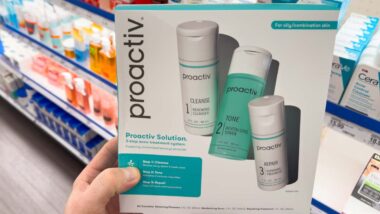Top Class Actions’s website and social media posts use affiliate links. If you make a purchase using such links, we may receive a commission, but it will not result in any additional charges to you. Please review our Affiliate Link Disclosure for more information.

Levaquin, generically referred to as levofloxacin, is used to treat bacterial infections. These might include infections of the skin, sinuses, lungs or stomach.
Levaquin belongs to a class of antibiotics called fluoroquinolones. Fluoroquinolones are a family of antibiotic drugs that are widely used to treat bacterial infections such as respiratory and urinary tract infections. Levaquin and other fluoroquinolones work by inhibiting bacterial growth in the body.
Fluoroquinolones are also used to treat bacterial bronchitis, pneumonia, sinusitis, septicemia and intra-abdominal infections, joint and bone infections, soft tissue and skin infections, typhoid fever, bacterial gastroenteritis, urethral and gynecological infections and many other infections.
Levaquin and other popular antibiotics like Cipro and Avelox are part of this class of drugs.
Side Effects of Levaquin
Even though Levaquin is a highly effective antibiotic, several side effects of Levaquin may occur in patients.
Some reported side effects of Levaquin include:
- abdominal discomfort
- diarrhea
- nausea
- vomiting
- headache
- dizziness
- blurred vision
- nervousness
- anxiety
- agitation
- skin itching
- vaginal discomfort
However, there are some much more serious side effects of fluoroquinolones like Levaquin that are just now coming to light. These include:
- tendon ruptures
- tendinopathy
- retinal detachment
- aortic aneurysm
- aortic dissection
Levaquin Aortic Dissection and Aortic Aneurysm
Aortic dissection is when the inner layer of the aorta, the large blood vessel branching off the heart, tears. As a result, blood surges through the tear which causes the inner and middle layers of the aorta to separate or dissect. This injury is often fatal.
Equally as concerning is an aortic aneurysm. This is when a portion of the aorta is weakened and as a result, bulges. When this happens, the aorta is at risk for bursting which is also often fatal.
Levaquin use has been associated with both of these serious, life-threatening conditions.
According to a study published by JAMA Internal Medicine, fluoroquinolone users had a two-fold increased risk of hospitalization due to aortic dissection or aneurysm.
Some researchers hypothesized that there might be a link between the more serious side effects of fluoroquinolones. Levaquin and other fluoroquinolones seem to have an association with collagen-related disorders including disorders affecting connective tissue. Researchers believe this effect may lead to aortic aneurysm and aortic dissection.
Researchers wrote, “Not only is tendon composed of collagen, collagen is also a major extracellular matrix component of the aortic wall. As fluoroquinolones may induce degradation of collagen causing tendinopathy, this raises the concern that fluoroquinolones may cause or aggravate aortic aneurysm and dissection by a similar mechanism.”
In essence, the tissue in the body’s tendons is similar to the tissue surrounding the aortic wall. Levaquin and other fluoroquinolones may increase the breakdown of this tissue which can lead to major aortic problems.
To test the hypothesis, researchers from the Taiwan National Health Insurance Research Database identified 1,477 patients hospitalized for aortic aneurysm or dissection from 2000 through 2011 identified from 1 million NHIRD enrollees.
The research found that even though aortic dissection and aortic aneurysm as some of the side effects of Levaquin are highly uncommon, the increased use of Levaquin and other fluoroquinolones make these a “significant concern.”
They called for more studies of fluoroquinolones to better determine side effect risks.
Join a Free Levaquin Lawsuit Investigation
If you or a loved one were diagnosed or hospitalized with an aortic dissection (aortic tear) or aortic aneurysm after taking Levaquin within the past 18 months, you may have a legal claim.
ATTORNEY ADVERTISING
Top Class Actions is a Proud Member of the American Bar Association
LEGAL INFORMATION IS NOT LEGAL ADVICE
Top Class Actions Legal Statement
©2008 – 2024 Top Class Actions® LLC
Various Trademarks held by their respective owners
This website is not intended for viewing or usage by European Union citizens.
Get Help – It’s Free
Join a Fluoroquinolone Aortic Aneurysm, Aortic Dissection Lawsuit Investigation
If you or a loved one were injured by a fluoroquinolone antibiotic aortic aneurysm or aortic dissection, you may have a legal claim. See if you qualify to pursue compensation and join a free fluoroquinolone class action lawsuit investigation by submitting your information for a free case evaluation.
An attorney will contact you if you qualify to discuss the details of your potential case.
Please Note: If you want to participate in this investigation, it is imperative that you reply to the law firm if they call or email you. Failing to do so may result in you not getting signed up as a client, if you qualify, or getting you dropped as a client.
Oops! We could not locate your form.












